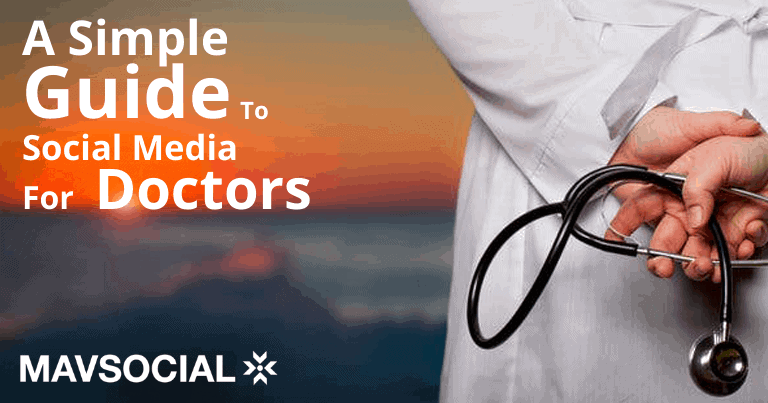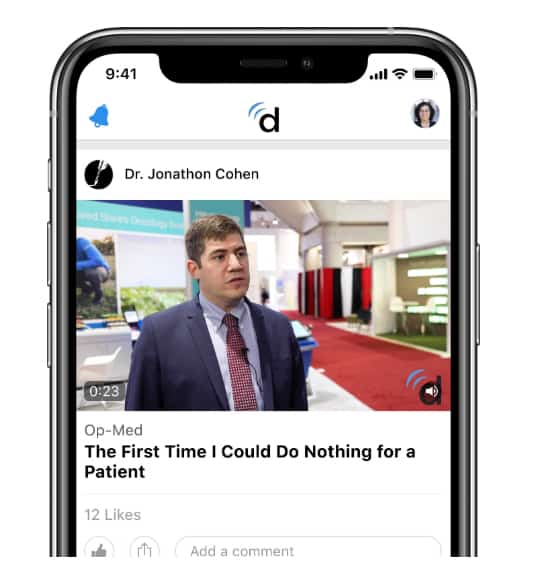Social media for doctors is easy to learn, affordable, and can be an effective means of marketing for doctors – particularly if you want to reach a large audience.
Learning the ins and outs of social media marketing might not come naturally to many of those in the medical profession, and knowing how to use social media for personal use is very different from how it is often used for business. There’s a lot to learn and there are constant platform changes, which can be time-consuming to keep up with. But, if done the right way, social media can position you as an industry leader and even drive an uplift in your appointments.
Aside from marketing, social media can be used by doctors as a tool for networking, educating patients, and can even be used as a customer service tool to answer non-urgent patient queries or for funneling appointments. Imagine if you could send a simple reminder for flu shots in winter to all your existing patients, or target new parents for reminders about vaccinations, all in the one place?
So, how can social media for doctors improve your deductive skills as a doctor, grow your medical practice, educate existing patients and move new patients into your marketing funnel? We’ve compiled our top tips to help you get started in navigating the wonderful world of social media for doctors.
What can social media do for doctors?
Social media is used by over 72% of the American public in some form. Unlike 10 years ago, it has now become adopted by people of all ages. Of those who are using social media, most are using it daily.
Social media for doctors can provide a large number of benefits and opportunities, such as providing:
- The opportunity to reach more people than just the patients in your practice
- An outlet to share knowledge and expertise
- An opportunity to dispel common medical myths
- The ability to communicate with current patients, including sharing product recalls, new updates on health trends and medical breakthroughs
- A platform to find new patients
- The opportunity to show thought leadership and display knowledge
- Information and access to conversations about health and wellness
- The ability to stay up to date with trends quickly and easily
- A place to connect with other health professionals, share knowledge and provide and receive support
- An insight into the minds of other non-health professionals and any common beliefs they might share about health or wellness
- Boosting your digital profile and improving your website’s SEO, if you have one
The best part is, you don’t have to be a social media marketing expert to start using social media for your business. While it’s important to have a strategy in mind, you can learn as you go.
There are, however, a few pitfalls you might encounter along the way, though, which is why it’s important to be aware of how to use social media. Information on social media is disseminated quickly, so it’s crucial you understand what information you can post, as well as what not to post.
How can social media promote doctors’ businesses?
While social media can be incredibly useful to those in the medical profession, marketing for medical practitioners isn’t as simple as it seems. Posting to Facebook won’t magically bring a flood of new patients into your door. Like anything, social media takes time, testing, and patience, and your efforts need to be guided by a well-considered strategy, in order to succeed.
Use these simple tips to get started:
Create a strategy
Before you get started, ensure you have a strategy, even if it’s just a few simple steps and tactics to get started. A more strategic approach will ensure your marketing efforts don’t go to waste. In this stage, do your research. See what others in the industry are doing on social, and make a note of how you might do it better. Your strategy should encompass which channels you’ll use, how you’ll use them, what you might post and what your goals are, as well as covering whether you’ll use paid social media and how.
Consider which networks to use
Your strategy should outline which social networks you’d like to use and why. Facebook is the obvious choice and is where most users will be present. However, for that very reason, it can be competitive. You may also want to be present on LinkedIn. And there are definitely also opportunities on Instagram and Twitter, especially if fewer competitors are present.
In your strategy, outline how you might use these different channels. For example, on Linked In, you might aim to connect with other doctors and share industry articles and updates, whereas, on Facebook, you may want to post updates with news for your patients.
Be aware of laws and regulations
Always be aware of the laws and regulations which govern your actions on social media. These should vary according to which country you are in. Some countries like, for example, Australia, have legislation that rules you cannot advertise prescription medicines in any social media posts. No matter where you are in the world, be mindful of posting anything which may breach a patient’s confidentiality. For example, don’t post a before and after image that contains recognizable tattoos or piercings.
Keep in mind that you’re trying to build an online presence as a trusted authority. Don’t give advice unless it has been thoroughly researched and verified.
Consider paid social
Once you’re seeing initial results from your organic social media efforts, you might be ready to start experimenting with paid social. While boosting posts on Facebook can increase your reach, don’t expect immediate results. It can take time to test various audiences to discover the most cost-effective targeting for your area and specific niches.
In some cases, hiring a trained specialist in this area can save you money if you don’t have the time to learn these skills. If you don’t have a significant budget for paid social media marketing, it may be best to wait until you do, as you won’t see ROI immediately from paid social media marketing. Keep in mind that organic social media is a free channel, which is rare in the world of marketing for medical practices.
Measure your results
What works for one doctor may not work for the next. To ensure you’re creating content that actually works, look back and see which content is resonating with others and has the most engagement, and which is not. From there, you can adapt your strategy to give your audience the information they really want.
You can also check tools like Google Trends and see what people are searching for. When creating content, try to piggyback off current events or trends in order to gain traction in a culturally-relevant way.
Struggling to come up with unique, original viral content?
We’ve prepared a guide to making super-shareable social media content to get you noticed online.
Consider outsourcing
Finally, if you don’t have enough time yourself, or feel as if your efforts need to be led by a better strategy, enlist the help of a freelancer or virtual assistant. You can outsource part or all of your social media marketing duties, such as:
- Strategy
- Paid social media
- Posting
- Creating content
- Scheduling
Or, if you’d still like to do your own work but don’t have time to post, there is a huge range of scheduling tools at your disposal that can assist with the timely distribution of content when you may not be able to post yourself.
Social networks for doctors to use
Of those in the medical profession, many don’t realize that there are several social media networks specifically for doctors available to use. These social networks can help you to establish connections with peers, share information and stay up to date on news, and build a support system of like-minded individuals. This can be immensely helpful, particularly for those working in remote communities.
These networks include:
- Sermo, which is the largest and most successful network for doctors. Sermo has over 800,000 doctors on the platform worldwide. Using this platform, you can ask real-life medical questions and seek advice from qualified doctors. Doctors can even earn money for providing opinions and reviewing products.
- Doximity is another network more centered in the United States. With over 500,000 users, Doximity aims to connect you with other doctors you might already know. It includes a personalized medical news feed and the ability to upload your C.V and credentials.
- Figure 1 is a platform with over 2.5 million users that enables you to get real-time medical advice from other doctors. Using the platform, you can upload images of the various ailments of your patients. The platform will remove any identifying features of the image such as tattoos in order to protect patient confidentiality. The depth and breadth of unique cases provide a solid platform to learn from real-life instances of various illnesses in order to become more educated and sharpen your deductive skills when it comes to diagnosing your own patients.
There are many more niche social networks for doctors depending on your specialties and geographic location. Social media is always changing and adapting, so new platforms will continue to open up in the future for sharing knowledge.
Social Media for Doctors
If you’re not present on social media you may be missing opportunities to self-educate, grow your skills, connect with other physicians and be the best medical health professional you can be. You may also be missing opportunities to engage with your patients and reach new audiences.
Social media for doctors holds unlimited opportunities if you’re willing to invest the time and effort into doing it well. So, keep this guide in mind and commit to a continuing path of learning so you can keep building on your knowledge base and improve your social media skills!






